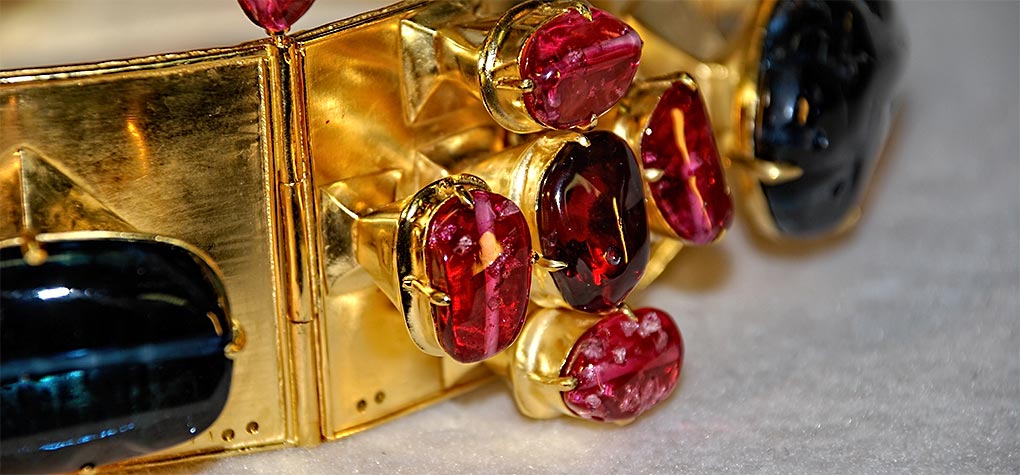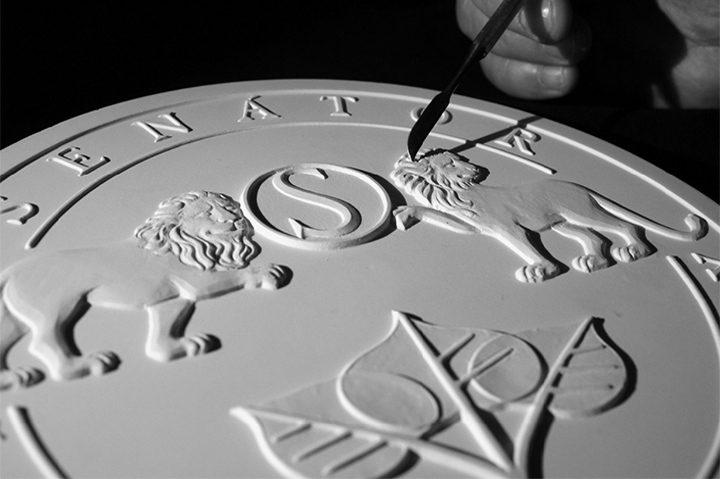New Suggestions For Vacuum Hardening Czechoslovakia Coins
Wiki Article
How Do High-Precision Cnc Machines Cut The Designs Into A Die Or Master Hub For Striking Gold Medals, Coins, Or Coins?
CNC machines are utilized to design dies and master hubs, which are used for the striking of gold medals and coins. Here's a quick overview of CNC Programming.
Computer-Aided Design (CAD) software creates an electronic 3-D model of your medal or coin.
Software for Computer-Aided Manufacturing (CAM) creates CNC and toolpaths built on the 3D model.
Selection of Die Material-
CNC machining of dies and master hubs are performed on durable materials like brasses, steels and hardened alloys. These materials are resistant to the high-pressure hitting process and ensure the exact reproduction.
Fixtures and Setup
For precision The material is securing onto the worktable of to ensure precision, the material is secured onto the worktable of a CNC machine or vice. The correct fixturing procedure is crucial to prevent vibrations or movement during the process of machining.
CNC Machining Process
CNC machines utilize end mills and ball mills as cutting tools to cut designs into master hubs and dies.
The CNC machine utilizes the toolpaths programmed, removing the material in a precise manner from the block of material based on the 3D models specifications.
You can use different types and sizes to cut out the design of a medal or coin.
CNC machines are governed by computer algorithms that ensure precision to the micrometer level.
Finishing and Refinement-
After initial machining the die or hub undergoes refinement.
Finishing off the surface can be accomplished by using hand-polishing, detailing or other tools that are specialized.
Quality Control and Inspection
The final die or hub is then subjected an extensive inspection by the aid of measurement instruments, such as gauges, micrometers and optical measuring instruments to ensure that it meets all design specifications.
Hardening Treatment (Optional)
Certain dies are heat-hardened or treated to improve the durability and resistance to wear.
The precision and capabilities of CNC machines allow for the accurate replication of intricate designs onto dies or master hubs. These machined dies serve as the essential tooling needed for striking gold coins or medals that have uniformity, precision and precise details. Follow the recommended CNC Machining Czechoslovakia gold medals blog info including silver nickel, coin 1, buying silver, gold biscuit buy, gold bullion price today, gold coins coin, buy gold bullion, gold bullion bars for sale, ebay gold coins, 1 4 oz gold coin and more.

Why Is Vacuum Hardening Used On Dies To Make Gold Coins And Medals?
The method of vacuum hardening is used in the production of gold coins or medals. The process involves heating dies at high temperatures, and exposing them to controlled environments within the vacuum. This is the basic information on the dies for vacuum hardening.
Dies used for making coins or medals are prepared by ensuring they are free of any traces of contamination or residues.
Moving into vacuum Furnace
Die dies are placed in a vacuum chamber, that is a specially designed heat-treatment room that can create vacuum.
Evacuation Air
Vacuum furnaces draw air out of chambers, resulting in an oxygen-free environment. This helps to prevent oxidation as well as ensure uniform heat treatments.
Heating Phase -
The furnace is then heated to the desired temperature for hardening dies. The temperature range depends upon the particular material used as well as the method of hardening.
Drinking at high temperatures
The material is allowed to reach the desired hardness and the metallurgical structures are created.
Cooling and cooling as well as quenching
Utilizing specialized techniques using specialized techniques, dies are swiftly cooling down or being quenched following the soak process. Rapid cooling helps to lock the desired strength and hardness in the metal.
Tempering (Optional)Tempering (Optional)
In certain cases the tempering process is a part of the process of hardening. Tempering involves heating the dies to a lower temperature to relieve internal stresses and improve the toughness of the die while maintaining its hardness.
Quality Control and Inspec-
Die dies that are hardened undergo rigorous quality inspections and tests to ensure they meet requirements for hardness, strength and tolerances to dimensional measurements.
Post-Treatment Handling-
Die dies are then coated or polished and then used to create coins or medals.
The process of hardening by vacuum increases the strength, durability of the dies, their wear resistance and the life of the dies used to create gold coins or gold medals. Through ensuring a controlled and contaminant-free environment it provides an efficient and consistent method to make the dies harder. Read the top vacuum hardening Czechoslovakia gold medals site advice including maple leaf gold coin, guardian angel coin, spanish gold coins, ebay gold coins, gold penny, gold coin prices, buy gold pieces, 1 oz gold coin price today, gold and silver dealers, buy gold coins near me and more.

In What Ways Do Gold Coins And Medals Undergo Coating Processes To Shield The Metal?
Here are a few of the various coating methods used. Here are different coating processes that are used to protect Coatingsto
Clear Protective Coatings (Varies). A clear protective coat, such as lacquer, an specialized plastic, may be used to shield the surface against oxidation, tarnishing or scratches. This coating shields the metal beneath the coin or medal and helps to preserve its original appearance.
Enhancement of Appearance
Gold Plating or Gilding- Gold coins or medals might undergo gilding or plating processes where an extremely thin layer of gold is sprayed onto the surface. This procedure enhances the look of the coin or medal by adding the appearance of luxury and lustre.
Aesthetic Effects
Patina or Antique finishes - Chemical treatments or special coatings are used to achieve an antique-looking finish. The process is designed to artificially age the surface to create an oxidized, aged appearance.
Colorization or ColoringIn certain instances, specific areas of the coin or medal are colored using special coatings or enamels that highlight features, draw attention to or to add visual interest.
Anti-Tarnish Coatings-
Anti-Tarnish Coatings and Solutions - to medals or coins with intricate design or areas that are prone to tarnishing anti-tarnish coatings and solutions can be applied. They prevent oxidation and discoloration over time.
Specialized Coatings for Security or Authentication-
UV-Reactive Coatings and luminescent Coatings Certain coins or medals are coated with coatings that contain UV reactive, revealing encrypted elements or hidden components to ensure security or authentication.
Selective Coatings for Contrast
Selective Coating RemovableIn certain instances the coatings of coins or medals are removed in a specific manner to provide contrast when polished and coated surfaces.
Each procedure has a particular objective, like to enhance the appearance or appearance of metal, enhance protection, increase security, or achieve certain aesthetic effects. These coatings have a significant impact on the look and durability of gold medals and coins and increase their value. Have a look at the recommended coating Prague Mint gold medals more recommendations. including michael phelps medal, 1 10 gold eagle, ngc grading, gold and coin near me, 5 cent piece, gold pieces for sale, gold and coin dealers near me, gold medals michael phelps, sovereign british coin, 24k gold coins prices and more.

How Are Gold Blanks Supplied And Stamped With High Pressure In Coin Presses For Minting?
When minting is completed, gold blanks are fed into coin presses and stamped under high pressure to transform them into coins or medals. Here's a quick look at loading blanks.
In the feeder system connected to the press, gold blanks have been previously prepared and quality-tested. This feeder system ensures a steady supply of blanks.
Feeding Blanks through the Press
The feeder system introduces blanks into the striking chamber inside the coin press, one at a time. This guarantees the exact positioning of each blank before stamping.
Alignment of Position
In the press, the blanks are aligned and placed in the chamber for striking, ensuring that they are perfectly aligned and oriented to allow for the stamping process.
Striking under High Pressure
Coin presses the gold blanks at high pressure by using two dies - one stationary and another moving. The stationary die contains the negative impression of the coin's design, while the die that moves acts as the hammer that strikes the blank.
The die that is moving strikes the blank with considerable force and transfers the design on the surface of the blank. The force exerted by dies creates the design, creating the relief raised and specifics on the coin or medal.
Repetition of Striking Is Optional
To create an image or design that is clearer and more clear, several strikes may be applied on rare coins or collectible editions. Each strike enhances the detail on the blank surface.
Ejection and Collection
Following the press's operation, newly-minted medals or coins are ejected out of the press into containers or trays. Quality control is performed to ensure that the designs conform to specifications.
Post-Processing-
If the mint specifies it, they may also apply additional processes, such as edge lettering, reeding of the edges, or post-strike treatment.
Stamping with high pressure, which imparts a design on the gold blanks is critical in that it makes them into finished coins or medals for collectors, circulation or for commemoration. This process is extremely precise, since any change in pressure or alignment will impact the overall quality of the coin. Read the best minting Prague Mint gold coins more examples. including buy coin gold, price of 1 oz of gold, mexican gold coins, gold biscuit buy, gold & silver bullion, 1 10 american gold eagle, double eagle gold coin, saint gaudens gold coin, $5 gold piece, gold quarter and more.
